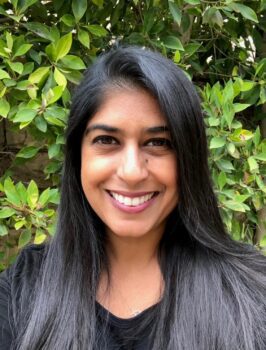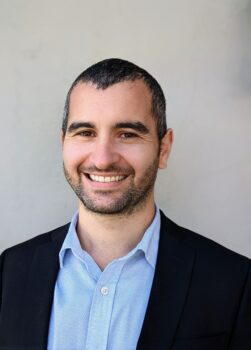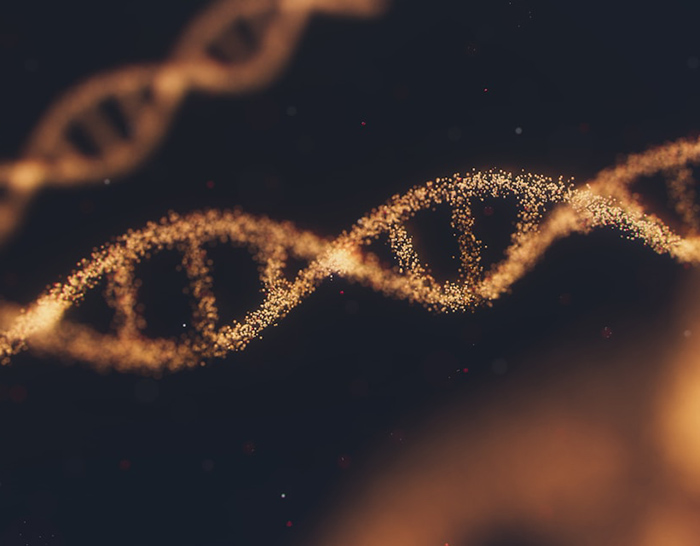“ALS is a devastating disease.”
This is a common refrain when talking about Amyotrophic Lateral Sclerosis (ALS), a nervous system disease that weakens muscles and impacts physical function.
While the onset of ALS can be subtle, it rapidly steals every voluntary function, including breathing.

“My husband was diagnosed with ALS in 2019. And we lost him the following year, 20 months after his first symptom,” explained Nadia Sethi, caregiver to her late husband and participant in the Biomarkers Working Group for the Accelerating Medicines Partnership for ALS (AMP ALS) at the Foundation for the National Institutes of Health (FNIH).
Sethi is one of many caregivers, researchers, doctors, and healthcare industry leaders joining the FNIH’s AMP ALS initiative. Their goal: to shift and collaborate the long disparate areas of study of ALS research into overdrive.
The AMP ALS initiative is an outcome of the Act for ALS signed by President Biden in December 2021. The legislation’s intent is to expand access to experimental ALS treatments as well as to develop a public-private partnership focused on ALS research, with support from the NIH.
ALS is a complicated disease
“ALS is not just one single disease,” explained Dr. Alessio Travaglia, Director of Translational Science, Neuroscience at the FNIH. “There are multiple forms of ALS that are genetic as well as sporadic, meaning you could be predisposed and carry genes that can result in ALS, or you may have no genetic disposition to develop ALS, but ultimately you may get ALS anyway. And so with all these possible forms of ALS, that probably means that there is no one treatment for ALS, but rather multiple treatments.”

ALS is a heterogeneous disease, which means no two patients are the same. This makes research all the more challenging.
“Progression for my husband was not very rapid for the first 10 months or so,” recalled Sethi. “After that first 10 months, there was a difference. Every week something was changing. There were new needs to address. It was kind of brutal. We’d get used to one loss—let’s say, he lost function in both of his hands first. And so we adjust to those changes and then the next loss happens right after that, and it’s time to adjust to that change, too.”
For Sethi’s husband, the onset of ALS started with temporary numbness in his hands in the cold, then numbness in an arm, then muscle twitching. “I think I was in complete denial, as a lot of people are, and I was like, Oh, you probably just got carpal tunnel syndrome,” said Sethi. “He was actually very, very worried and said, No, this is not good. I need to see a neurologist.”
Sethi and her husband both have backgrounds in healthcare, with Sethi being a trained dentist and her husband a physician having worked in the pharma industry, which she thinks allowed him to know to get care quickly. However, it took seven or eight months from the first symptom to diagnosis.
Sethi’s story is not unique. But why does it take so long for those with ALS to get a solid diagnosis? First, as noted, ALS is a heterogeneous disease and expresses itself differently for each patient. Second, there are currently no biomarkers for ALS—and there is an urgent need for them.
“One of the things that AMP ALS is looking to hopefully help with is to develop some biomarkers that might help with diagnosis,” explained Sethi.
The goals of AMP ALS
The AMP ALS program has a number of priorities, said Dr. Travaglia. First, developing a central repository of all of the data on ALS, “because ALS research is extremely fragmented.” This central repository could ultimately make it easier for researchers to develop drugs and clinical trials, and, of course, discover biomarkers.
“Biomarkers are missing to identify patients early,” Dr. Travaglia continued. “Right now we don’t really have a way to monitor how a patient is progressing or how they are responding to the treatment that they are being given in clinical trials.”
AMP ALS already knows where it is going to start on biomarkers.
“Our current plan for biomarkers research came up during the first meeting that we had as a team,” said Dr. Travaglia. “Based on the information we have, we decided we should focus on the TDP 43 biology for ALS because it is more promising for the field and can potentially offer in the next few years a viable biomarker.”
Eventually, as options for ALS biomarkers grow, the potential of personalized medicine for ALS patients will come to the fore, which would be a game-changer and may even eventually save lives.
A holistic approach to the ALS discussion
The FNIH is notable in that it carves out a distinct spot for patient advocacy.
“It’s very critical to incorporate the perspectives of people with lived experience,” explained Sethi, who joined the Biomarkers Working Group with AMP ALS in January 2024. “We tend to see things differently than people who are immersed in the science space. And especially for something like biomarkers.”
“In the past, when the FNIH put together initiatives, we mostly focused on data sets and collection,” admitted Dr. Travaglia. “But recently, especially in this initiative, we have engaged quite a lot with people with lived experience and they have provided feedback that has been critical to the initiative, especially when we design clinical research experiments.”
And patient advocates, especially in the ALS space, have better anecdotal knowledge of the disease’s progression than many clinicians or researchers.
“We tend to notice things that happen on a day-to-day basis that somebody in the research space might not,” said Sethi. “Those are things where we can bring a perspective to kind of drive change and to remind the researchers that, Yes, maybe you’re looking at this like once a month, but we noticed differences on a day-to-day basis.”
Sethi, for her part, became an ALS patient advocate as a way to take control of an uncontrollable situation.
“When he was going through diagnosis, I decided to get involved in many different research-related ALS initiatives,” she said. “I’ve also noticed that people who progress very rapidly don’t often have time to advocate for ALS because their life is changing so rapidly. I was doing things because it made me feel better. I was still advocating because it made me feel like I was getting back at ALS in a way. But my husband didn’t have the bandwidth to do that as he was going through it. And so there’s nobody here to incorporate his experience now except for me.”
AMP ALS is taking its first steps, but with goals set and teams built, the momentum behind the initiative is building.
“The ultimate goal is to treat ALS,” concluded Dr. Travaglia.




